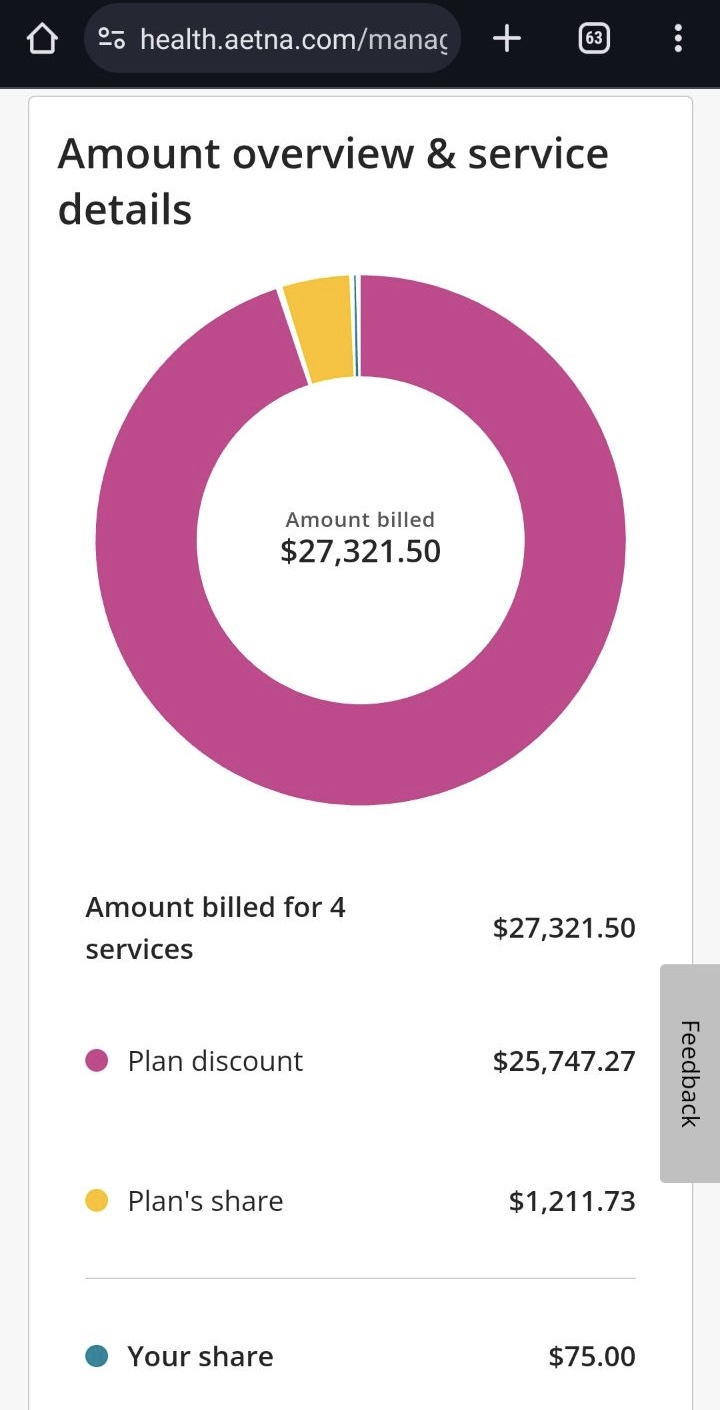How do Americans go bankrupt after seeking health care?
A friend’s child had some back pain after a fall. A hospital billed $27,321.50 for an MRI (it says “4 services” below, but it was really just one encounter with the MRI machine; some different body parts and contrast). That’s what an uninsured person (“a mark”) would have been chased for, eventually into bankruptcy if necessary. What’s the real price of this service? I.e., what does the hospital actually expect to get paid from a typical patient (insured either privately, via Medicaid, or via Medicare)? About $1,287:
(And, of course, the results were inconclusive, so the value of the $27,321 MRI was $0.)
Related:
- “Zuckerberg-funded ER reportedly refuses private insurance” (New York Post, 2019), which gives some eye-popping list prices (in pre-Biden dollars, remember) for services that it normally gets paid perhaps 10-15% for
- An insured day in the American health care system (2013)
- Another day and another scam in the American health care system (2022)

Dirty little secret about health insurance industry: much revenue comes from “claim adjustments”, ie: “negotiating” the fictitious high prices. When that $27.3k bill was reduced by $25.7k, large group policy holders will pay 10% of those “savings” to the insurance corp as a reward for their awesome negotiating skills. So insurance corps are incentivized to find health care providers with high sticker prices.
On the flip side, health care providers are incentivized to have high fictitious sticker prices. When they treat under/non insured people for free, those services generate an accounting loss at the high sticker price, allowing health orgs to maintain their “non-profit” status.
Accounting losses are not relevant to nonprofit status. Nonprofit status depends on the aim of the institution and whether it distributes profits in the form of dividends to the owners or other payments to the owners. It does not depend on having a sticker price of X and selling for less than X. In addition, profits and loses are determined by what you pay for for inventory and what you sell it for — not on what you mark inventory at and what you sell it for.
I have never heard about emergency MRI procedures.
I am sure that members of Philip’s friend circle can negotiate cost of MRI procedure on their own, and maybe volunteer to provide negotiation services for MRI required by illegal and or undocumented immigrants, squatters and US citixens lazy enough to apply for mean – tested benefits.
There are, in fact, “emergency” MRIs. I was an expert witness in a medical malpractice case where the plaintiff claimed failure to get an emergency MRI caused millions of dollars in damages.